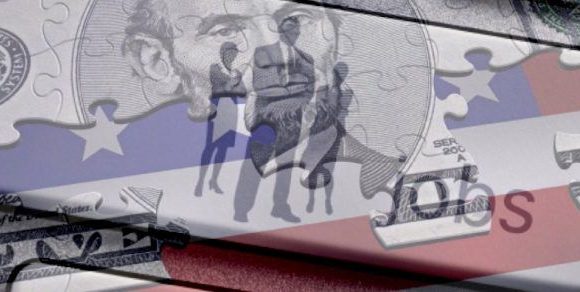NRF: U.S. economy ‘more resilient’ than expectations
by October 10, 2023 6:11 pm 581 views

The U.S. economic picture heading toward the holiday season is not perfect, according to Jack Kleinhenz, chief economist for the National Retail Federation (NRF). The trade group has not released expectations for holiday sales, but has reduced its full-year estimates.
“New turbulence from the expanding autoworkers strike and the threat of a government shutdown – which could still happen after Congress’ short-term funding measure expires – have added to the existing headwinds already facing the economy,” Kleinhenz said. “Nonetheless, the economy continues to chug along and defy recession predictions, proving it to be more resilient than anticipated.”
He said the final 2.1% increase in the gross domestic product (GDP) reflected less consumer spending on goods and services than originally estimated. Consumer spending grew, but only 1.8% year-over-year adjusted for inflation rather than the original estimate of 2.3%, as spending on services like household utilities and vehicle maintenance was revised downward along with spending on goods like home furnishings, appliances and clothing, he noted.
“While the data has shown continued economic growth, weaker growth as mirrored in the GDP revisions suggests that higher interest rates and tighter lending standards are working more thoroughly than previously recognized,” Kleinhenz said. “Since higher interest rates typically slow down the economy, the Federal Reserve is most likely pleased to see that higher rates are having an impact on employment, economic output and corporate results.”
Incoming data suggests that the just-ended third quarter was largely on par with the second quarter and that 2023 could still have a “soft landing” rather than a recession, according to Kleinhenz.
He pointed to softening consumer confidence reported by The Conference Board in August as the core index reading fell 5.7 points to 103. Also the University of Michigan Index of Consumer Sentiment dipped to a reading of 68.1 from August’s already low 69.5 as oil and gas prices continued to rise.
Despite the dip in consumer confidence, year-over-year spending grew 5.8% in August fueled in part by a 7.3% increase in disposable income, according to the Personal Consumption Expenditures Price Index. This measure of inflation indicated a 3.5% increase from a year ago.
“With the Federal Reserve eager to see job growth weaken without causing the unemployment rate to take off, a number of indicators suggest that the tight labor market is cooling – but in the right way,” said Kleinhenz.
